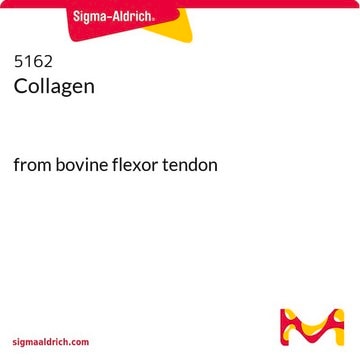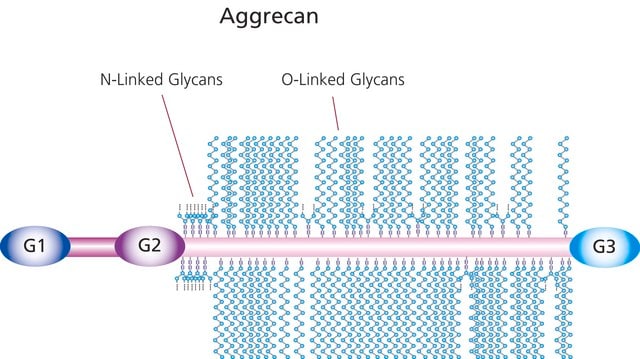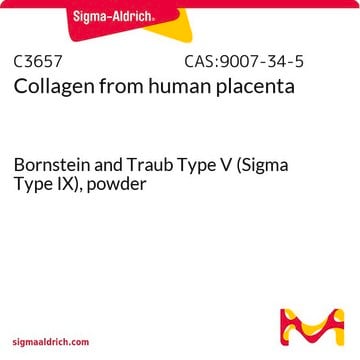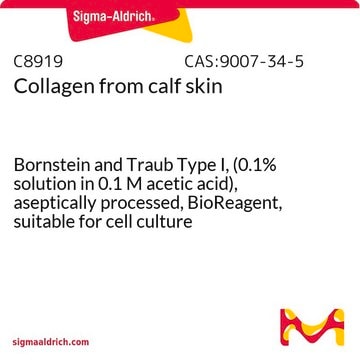C7806
Bovine Collagen Type II
from bovine nasal septum, powder, suitable for ELISA assays
Synonim(y):
Collagen from bovine
About This Item
Polecane produkty
product name
Collagen from bovine nasal septum, Bornstein and Traub Type II, powder
pochodzenie biologiczne
bovine nasal septum
Postać
powder
metody
ELISA: suitable
rozpuszczalność
aqueous acid: soluble
numer dostępu UniProt
temp. przechowywania
2-8°C
informacje o genach
bovine ... COL2A1(407142)
Opis ogólny
Zastosowanie
Collagen Type II is sometimes used to induce an animal model of rheumatoid arthritis. However, under conditions leading to formation of reactive oxygen species, the subjects develop tolerance for auto-antibodies. This is an unusual situation of ROS having a favorable effect.
Działania biochem./fizjol.
Uwaga dotycząca przygotowania
Kod klasy składowania
11 - Combustible Solids
Klasa zagrożenia wodnego (WGK)
WGK 1
Temperatura zapłonu (°F)
Not applicable
Temperatura zapłonu (°C)
Not applicable
Środki ochrony indywidualnej
Eyeshields, Gloves, type N95 (US)
Certyfikaty analizy (CoA)
Poszukaj Certyfikaty analizy (CoA), wpisując numer partii/serii produktów. Numery serii i partii można znaleźć na etykiecie produktu po słowach „seria” lub „partia”.
Masz już ten produkt?
Dokumenty związane z niedawno zakupionymi produktami zostały zamieszczone w Bibliotece dokumentów.
Klienci oglądali również te produkty
Nasz zespół naukowców ma doświadczenie we wszystkich obszarach badań, w tym w naukach przyrodniczych, materiałoznawstwie, syntezie chemicznej, chromatografii, analityce i wielu innych dziedzinach.
Skontaktuj się z zespołem ds. pomocy technicznej